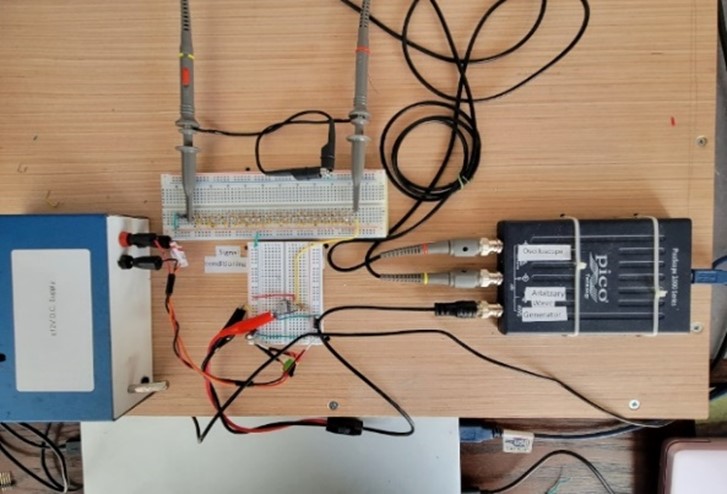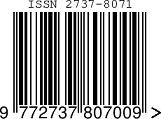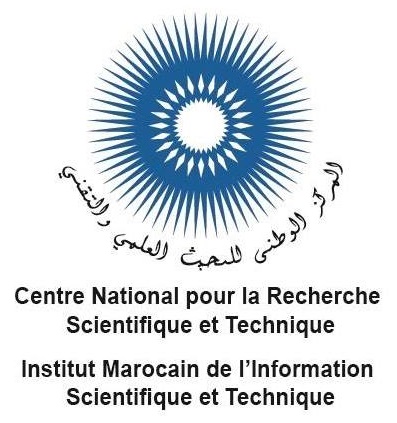The effectiveness of fiber-filled concrete : The application of an old technique to solve a modern problem
Keywords:
Thermal Modelling, Fiber filled concrete, concrete, RC filter, Equivalent electrical circuitAbstract
Using an analogy between the conduction of electricity and the conduction of heat, a thermal problem has been recast in terms of an electrical circuit, facilitating the variation of physical properties. The electrical model provided an answer to the question of ‘what is the effect of different fiber additives on the conduction of heat in a typical concrete floor?’. The model used an amount of heat energy, representative of that collected during one day on a photovoltaic cell of area 1 m2 located at 45 degrees North and was applied to heating coils laid between the sub-floor and main floor. Quantitative results are presented for the case of a steel fiber (SF) additive compared to a glass fiber (GF) additive. The SF additive conducted the heat more efficiently than the GF additive but the delay in peak outputs was similar. The results are an essential first step in a cost benefit analysis.
Downloads
References
Paschkis and Baker,‘A method for determining Unsteady-State Heat Transfer by Means of an Electrical Analogy’, Trans. ASME, 64, New York, NY (1942).
Lawson and McGuire, ‘The solution of transient heat flow problems by analogous electrical networks’, Proc. Inst. Mech. Engrs. Part C: Mech. Eng. Science, Vol A1, p167 (1952).
Robertson and Gross, ‘An electrical analog method for transient heat flow analysis’, Institute of Research of the National Bureau of Standards, Vol.61 No.2, p105 (1958).
G. Parnis, ‘Building Thermal Modelling using Electrical Circuit Simulation’, thesis submitted in 2012 to the School of Photovoltaic and Renewable Energy Engineering, University of New South Wales, Sydney, Australia. http://unsworks.unsw.edu.au/bitstreams/68b8c779-35c5-499d-bb5f-08dea3b5a023/download
Khane, Vaibhav, ‘Analogy based modeling of natural convection’ (2009). Masters Theses. 4723.
Ram´?rez-Laboreo, Sagu´es_and Llorente,’Thermal modelling, analysis and control using an electrical analogy’, Conference Paper · June 2014 DOI: 10.1109/MED.2014.6961423 https://webdiis.unizar.es/~ramirlab/papers/2014_MED.pdf
Stephenson and Mitalas, ‘Lumping errors of analog circuits for heat flow through a homogeneous slab’, NRC Publications (1961) https://nrc-publications.canada.ca/eng/view/object/?id=b8123eb2-d6ff-4c15-92db-ca3057df2f92
Merkaj, Dhamo and Kalluci, ‘Thermal Model of a House using Electric Circuits Analogy’, Proc. 10th International Conf. on Smart Cities and green ICT systems (SMARTGREENS2021) ISBN: 978-989-758-512-8.
Bastida et. al. ‘Thermal dynamic modelling and temperature controller design for a house’, 10th Conf on Applied Energy (ICAE2018) Hong Kong, China. Elsevier. Energy Procedia 158(2018) 2800 – 2805.
Tate, Cheneler and Taylor, "Simplified models for heating system optimisation using the thermal–electrical analogy," 2019 25th International Conference on Automation and Computing (ICAC), 2019, pp. 1-6, doi: 10.23919/IConAC.2019.8895035.
Picoscope 2204A 2 channel 10MHz 100MSPS, with built-in Arbitrary Waveform Generator. Pico-Technologies.
TL082: Wide Bandwidth Dual JFET-input operational amplifier. https://www.ti.com/lit/gpn/tl082-n
Malek, Jackowski, Lasica and Kadel, ‘Influence of Polypropylene, Glass and Steel Fiber on the Thermal Properties of Concrete Materials’, Materials 2021, 14, 1888. https://doi.org/10.3390/ma14081888
Nagy, Nehme, Szagri, ‘Thermal Properties and Modeling of Fiber Reinforced Concretes’, Energy Procedia, Volume 78, 2015, pp2742-2747, ISSN 1876-6102, https://doi.org/10.1016/j.egypro.2015.11.616.
Pavlík, Pod?bradská, Toman, and ?erný ‘Thermal Properties of Carbon- and Glass Fiber Reinforced Cement Composites in High Temperature Range in a Comparison with Mortar and Concrete’, ResearchGate (2002)
Rowlands, Kemery, Beausoleil-Morrison, “Optimal solar-PV tilt angle and azimuth.” Energy Policy 39(2011) p1397 Elsevier.
Buffo, Fritschen and Murphy, ‘Solar radiation on various slopes and latitudes’, USDA Forest Service Research Paper PNW-142 (1972.
Idso, ‘Atmospheric Attenuation of Solar Radiation’, J. Atmos. Sci. 26 p1088, (1969).
Poruba, et.al. ‘Optical absorption and light scattering in microcrystalline silicon thin films and solar cells’, Journal of Applied Physics 88, issue 1, 148-160, 2000
Kreider, Curtiss and Rabl,’Heating and Cooling for Buildings’, Ch 8 p388, CRC Press (2010) ISBN 978-1-4398-1151-1 (hardcover : alk. paper).
Ljung and Gland,’On the global identifyability for arbitrary model parameterizations’, Automatica, 30 No2, pp 265-276, 1994

Downloads
Published
How to Cite
Issue
Section
License
Copyright (c) 2022 John Armitage

This work is licensed under a Creative Commons Attribution 4.0 International License.
Copyright on any article in the International Journal of Engineering and Applied Physics is retained by the author(s) under the Creative Commons license, which permits unrestricted use, distribution, and reproduction provided the original work is properly cited.
License agreement
Authors grant IJEAP a license to publish the article and identify IJEAP as the original publisher.
Authors also grant any third party the right to use, distribute and reproduce the article in any medium, provided the original work is properly cited.














